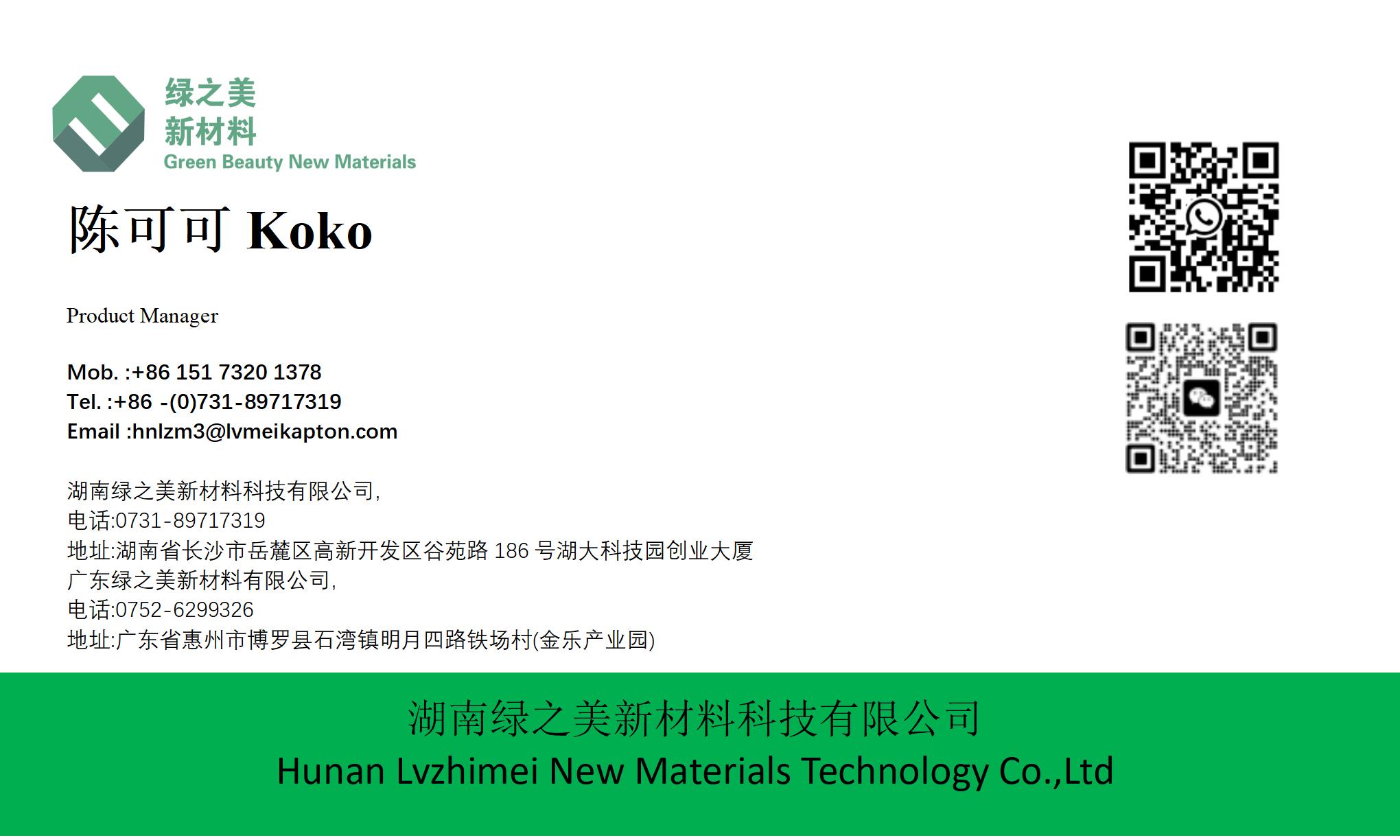hnlzm@lvmeikapton.com
+86 13787123465


Hunan Lvzhimei New Material Technology Co., Ltd.


NameDescriptionContent
When to Use Strong Adhesion and Blocking High Temperature Tape in Industrial Applications|https://www.lvmeikapton.com/
Source:
|
Author:Koko Chan
|
Published time: 2025-05-12
|
46 Views
|
Share:
High temperature tapes, engineered with advanced adhesive technologies and heat-resistant polymers, play a critical role in industrial applications where thermal stability, durability, and bonding strength are paramount. These tapes offer exceptional resistance to temperatures ranging from -100°F (-73°C) to 500°F (260°C), making them indispensable in environments subjected to extreme heat, chemical exposure, or mechanical stress. Understanding the ideal scenarios for their application is essential to optimize production processes and ensure product reliability.
1. Masking During Thermal Processes
Thermal treatments such as soldering, powder coating, and curing require precise protection of non-treated areas. High temperature tapes with strong adhesion and thermal barrier properties excel in these scenarios:
●
Soldering and Wave Reflow Processes: In electronics assembly, tapes like polyimide (PI) or silicone-based variants prevent coatings from adhering to circuit board components during wave soldering. Their adhesion strength (≥15N/25mm) ensures stability, while thermal resistance up to 500°F (260°C) shields sensitive areas from melting or degradation.
●
Powder Coating Protection: Automotive and industrial parts subjected to powder coating need masking tapes capable of withstanding temperatures up to 400°F (204°C). Tapes with modified acrylic adhesives provide strong adhesion without residue, protecting logos, electrical contacts, or threaded components from unintended coating.
Table 1: Masking Tape Performance Comparison
Tape Type | Temperature Range | Adhesion (N/25mm) | Residue After Removal |
PI Tape (Silicone) | -100°F to 500°F | ≥20 | None |
Acrylic Masking Tape | 200°F to 400°F | ≥15 | Minimal |
Glass Fiber Reinforced | 300°F to 500°F | ≥25 | None |
2. High-Temperature Environments
Industries such as automotive, aerospace, and energy generation demand materials that withstand prolonged exposure to heat:
●
Automotive Engine Compartments: Tapes with silicone adhesive and polyimide backing (e.g., 3M™ High Temperature Tape 5413) protect wiring harnesses and sensors from engine heat (up to 300°F/150°C). Their chemical resistance to oils and fuels ensures longevity.
●
Industrial Oven Applications: In curing processes for composites or coatings, tapes with ceramic-filled silicone adhesive maintain adhesion even at 500°F (260°C), preventing component displacement during thermal cycling.
3. Permanent Bonding and Structural Reinforcement
Strong adhesion tapes replace mechanical fasteners in applications where weight reduction or seamless aesthetics are prioritized:
●
Electronics Encapsulation: PI tapes with high tensile strength (≥500N/25mm) bond heat sinks to CPUs, eliminating thermal gaps. Their low outgassing properties prevent contamination in vacuum environments.
●
Aerospace Composite Assembly: tapes reinforced with glass fiber or aramid fibers bond honeycomb structures, resisting shear forces and temperatures up to 350°F (177°C).
Table 2: Bonding Tape Performance Matrix
Application | Tape Type | Key Features |
Aerospace Panel Bonding | Glass Fiber/PI Tape | Shear Strength: 30N/mm², UV Resistance |
Electronics Potting | Silicone/Acrylate Composite | Dielectric Strength: 2.6kV/mm, Flame Retardant |
Automotive Trim Fixation | Modified Acrylic Tape | Vibration Resistance, Peel Adhesion: 35N/25mm |
Technical Considerations
Selecting the appropriate tape requires assessing:
1.
Temperature Thresholds: Determine peak temperatures and duration of exposure. For example, PI tapes are ideal for >400°F applications, while modified silicone tapes suit 200-300°F ranges.
2.
Surface Compatibility: Adhesive types (e.g., silicone, acrylic, rubber) dictate bonding efficacy on metals, plastics, or ceramics.
3.
Chemical Exposure: Tapes with fluoropolymer coatings (e.g., PTFE) resist acids, solvents, and UV radiation.
Industry-Specific Applications
Automotive Manufacturing
●
Exhaust System Insulation: Aluminum foil tapes with ceramic adhesive prevent heat transfer to surrounding components, reducing noise and improving fuel efficiency.
●
Battery Module Sealing: Tapes with conductive acrylic adhesive create electrical bonds while withstanding thermal cycling in EV battery packs.
Aerospace and Defense
●
Thermal Protection of Avionics: tapes with aluminum or ceramic fillers shield control units from jet engine radiation (up to 600°F/315°C).
●
Satellite Solar Panel Mounting: low-outgassing PI tapes ensure adhesion in vacuum environments without contaminating sensitive electronics.
Electronics and Semiconductors
●
Wafer Processing: Tapes with UV-curable adhesive temporarily secure silicon wafers during etching processes, allowing easy release without damage.
●
LED Assembly: tapes with thermally conductive acrylic adhesive bond substrates, dissipating heat and extending LED lifespan.
Economic and Efficiency Benefits
High temperature tapes offer significant advantages:
1.
Cost Reduction: Eliminating mechanical fasteners saves assembly time and material costs.
2.
Process Streamlining: Masking tapes with easy release liners reduce setup times in thermal treatments.
3.
Product Longevity: Thermal barrier protection enhances component reliability, reducing warranty claims.
Conclusion
In industries where heat, chemicals, and mechanical stress pose challenges, high temperature tapes with strong adhesion properties provide versatile solutions. From masking critical components during thermal processes to permanent structural bonding, their performance ensures safety, efficiency, and durability. As technology advances, tapes with nanocomposite adhesives or smart coatings (e.g., self-healing polymers) are likely to further expand their applications in emerging sectors such as renewable energy and advanced manufacturing.



Hunan Lvzhimei New Material Technology Co., Ltd.
Quick Links
Product Categories
© 2024 Hunan Lvzhimei New Material Technology Co., Ltd.All Rights Reserved. Designed by Erge
0731 - 89717319
hnlzm@lvmeikapton.com
+86 13787123465
Room 502, Chuangye Building, No186, Guyuan Road, High-Tech District, Changsha, Hunan, China
CONTACT



